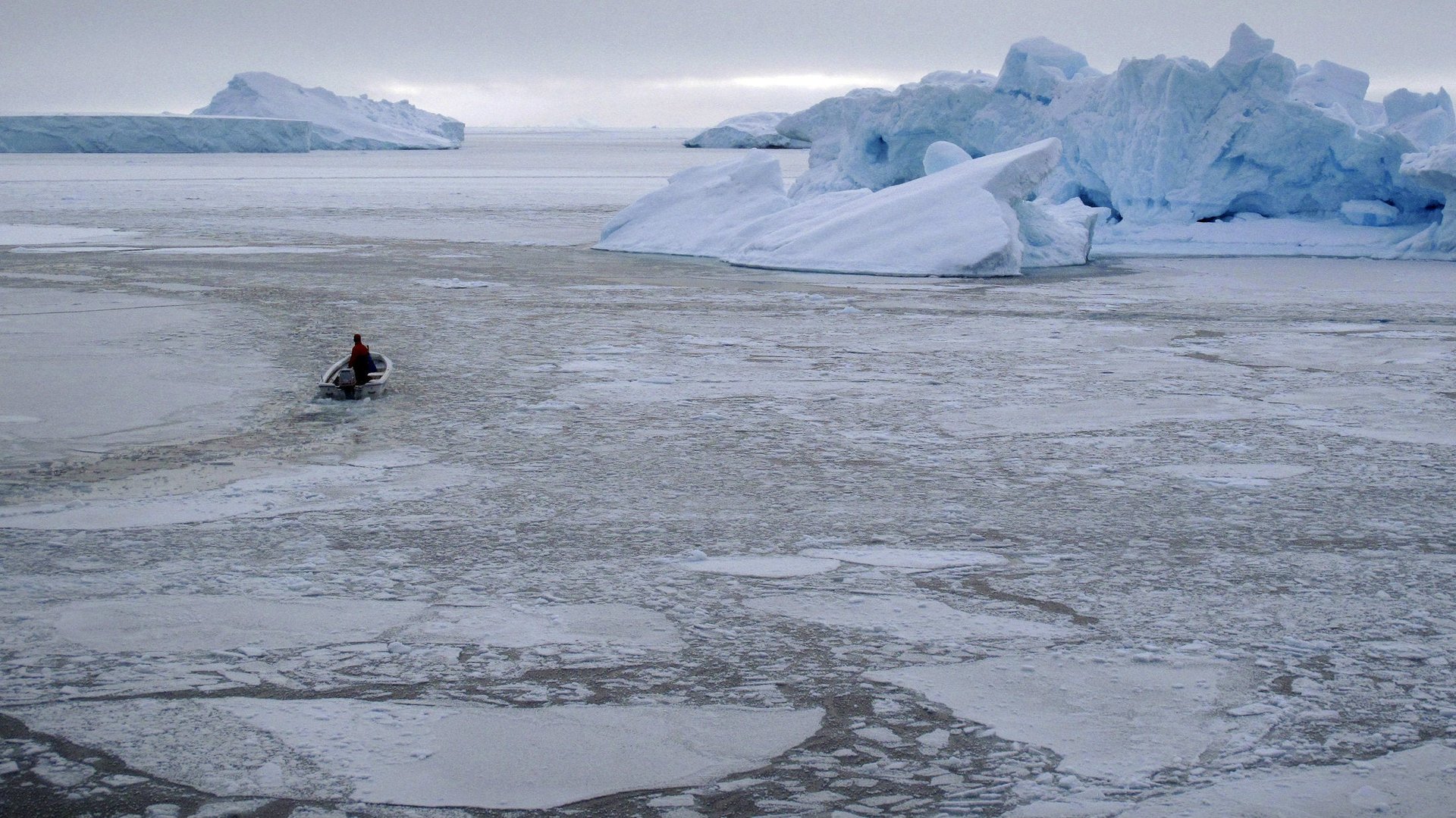It’s above freezing at the North Pole
Temperatures in the North Pole soared above freezing this week to a balmy 35°F (2°C).


Temperatures in the North Pole soared above freezing this week to a balmy 35°F (2°C).
To understand how unusual it is for polar temperatures to climb that high, consider Cape Morris Jesup, about 400 miles south of the pole.
Located within the Arctic Circle on the northern tip of Greenland, it’s the world’s northernmost weather station. As Robert Rhode, a physicist at Berkeley Earth pointed out on Twitter, so far this year, meteorologists have recorded 61 hours of above-freezing temperatures at Cape Morris Jesup. (The previous record was 16 hours by the end of April, set in 2011.)
Warmer even in the dark
The average February temperature in the region is about -20° F (-30° C). At this time of year, the Arctic Circle is in perpetual darkness—the sun set in October and won’t rise again until March—and yet temperatures as high as 43° F were recorded at Cape Morris Jesup on Sunday (Feb. 25), just 400 miles from the North Pole.
Only twice before has the Danish Meteorological Institute (DMI), which makes forecasts and observations in Greenland, recorded temperatures above freezing (link in Danish) during February, once in 2011 and again 2017.
“The reason for the exceptionally high temperature is probably the combination of relative hot air in the Arctic and the Foehn around Cape Morris Jesup,” said DMI climatologist John Cappelen. (Foehn is a type of very dry, warm wind that blows down the sides of mountain ranges, especially in the Arctic.)
A new normal
Beyond the recent heat wave, temperatures for the Arctic area north of 80 degrees latitude have hovered around 10° above average in 2018.
The warm winter has had a direct effect on Arctic sea ice, which is usually at maximum levels this time of year. In January, the US National Oceanic and Atmospheric Administration (NOAA) recorded the lowest amount of sea-ice coverage since it started keeping records in 1979. If the warm weather continues, 2018 will most likely be the fourth-straight year of record-low sea ice levels.
While occasional temperature spikes aren’t uncommon in the Arctic, scientists are concerned that the rising frequency and persistence of these extreme warming events is a strong indication the climate is changing. A recent analysis from Climate Central observed that an Arctic “heat wave” like this “would have been extremely unlikely in the climate of a century ago.”